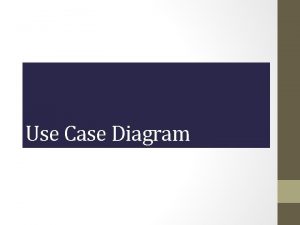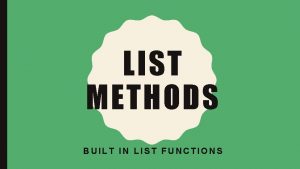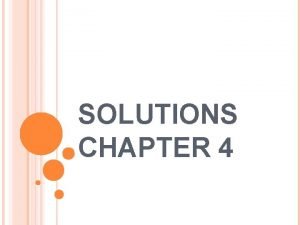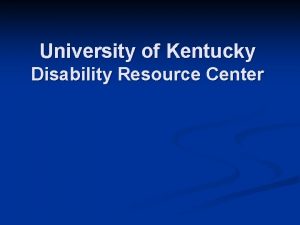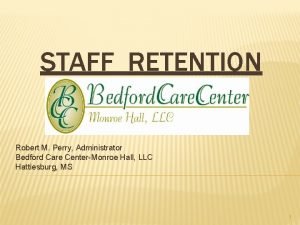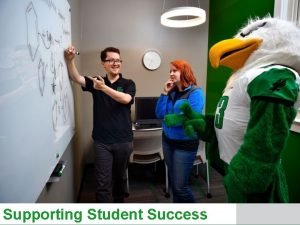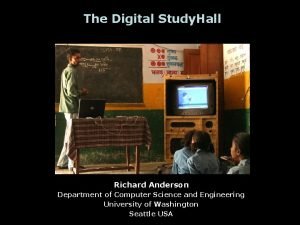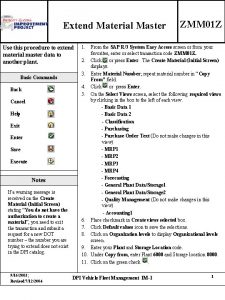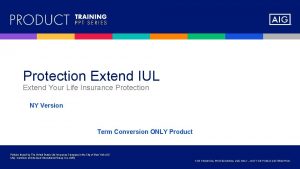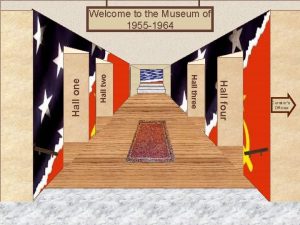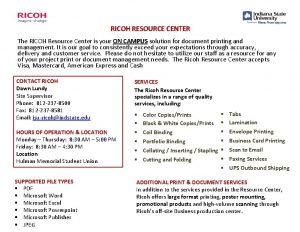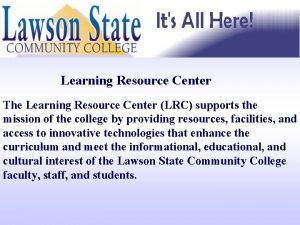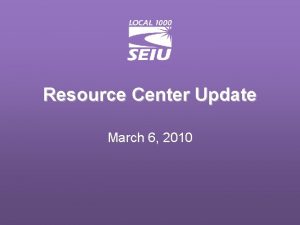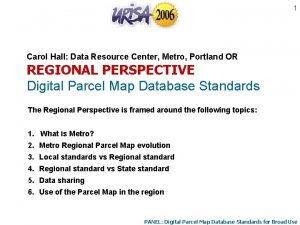Study Hall and Resource Center Review practice extend












- Slides: 12

Study Hall and Resource Center • Review, practice, extend, and discuss ideas presented in class • Examine resources for mathematics teachers • Work on assignments with colleagues • Ask questions about teaching mathematics

Why is “Place Value” So Important? • Fundamental mathematical structure and set of ideas that spans kindergarten through calculus • Underpinning for system of notation, structure of number for computation, representation of number systems • Root of many student mathematical difficulties • Central to school curriculum topics from K - 8 • Because it seems so obvious to adults, more attention required to teach it

Goals for Bundling Activity Three layers of learning for you: a) Major ideas of place value b) Begin investigation of representational materials for modeling place value (bundling sticks) c) Teacher questions as tool in instruction

Core Ideas of Place Value Today • Distinction between quantity and numeration • Grouping (tens, but could be other) • Fundamental “ten-ness”: “decimal notation” • Directionality • Representational materials (bundling sticks) • Close mapping between structure of grouping and notation we use

What stood out to you today about place value and the work of modeling it?

U. S. Mathematics Education in 2005 • Mathematics achievement is inadequate – e. g. , only 17% of grade 12 students performed above “basic” level of competence (2000 NAEP); approximately 42% of MI students met standards in math, whereas 78% of students met standard in reading (2005 MEAP) – Significant and persistent achievement disparities related to race and socioeconomic status – Many well-educated adults lack basic competence and confidence in mathematics (contrast with literacy) • Broad evidence that conventional methods and curriculum are ineffective – International comparisons – Effective with only a few • Changing goals and accountability – Broader and higher levels of mathematical proficiency required for life in the 21 st century – Mathematical proficiency for all students, not just for a few (NCLB)

Challenges of Becoming a Teacher of Mathematics in 2005 • Educated in one system, preparing to be a professional for another – If successful, dubious of criticisms; if not successful, may take personalized perspective – Lack of images of alternatives – Own mathematical knowledge product of current system, professional needs more and different for improved instruction • Dilemma: Do you prepare, as a beginner, to fit in to the system we have or to help make a better system?

How the Course Design Addresses these Challenges (1) Guiding Principles Domains of Practice Eliciting, interpreting, and assessing students’ ideas Modeling and representing mathematical ideas Leading a whole class discussion Designing, enac t-ing, analyzing, improving lessons Attending to the integrity of the mathematics Committing to the learning and achievement of all students Establishing and managing a productive learning environment Learning from and systematically improving practice

How the Course Design Addresses these Challenges (2) • Choose topics and practices that: – Contribute to improvement in mathematics instruction – Are of high leverage for instruction – Can be mastered by beginning teachers • Focus on skillful performance through explicit instruction and repeated opportunities to practice and get feedback • Use records of practice – To study real practice, develop images, skills – Learn to learn from teaching • Emphasize collegial professional work for the development of improved knowledge and practice

Studying Teacher Moves • Video clip from Lampert’s first day of class • Working on “inbetweenness” problems:

Focus for Viewing • What kinds of teacher questions do you see? What specific questions stand out? • More broadly, what other teacher “moves” do you see that are not questions?

Analysis of Teacher Moves • Can you give names to some of the recurrent teacher moves? • Pick a particular move. Name it, and speculate what purposes it may be serving.
 Resource leveling is the approach to even out the peaks of
Resource leveling is the approach to even out the peaks of Perbedaan antara resource loading dan resource levelling
Perbedaan antara resource loading dan resource levelling Use case with multiple actors
Use case with multiple actors Airport use case diagram
Airport use case diagram Extend vs append python
Extend vs append python What are the outputs of the sign-extend and the jump
What are the outputs of the sign-extend and the jump Disability resource center uky
Disability resource center uky Dane county aging and disability resource center
Dane county aging and disability resource center Hall health uw
Hall health uw Building
Building Bedford care center monroe hall
Bedford care center monroe hall Unt sage hall testing center
Unt sage hall testing center Digital study hall
Digital study hall


